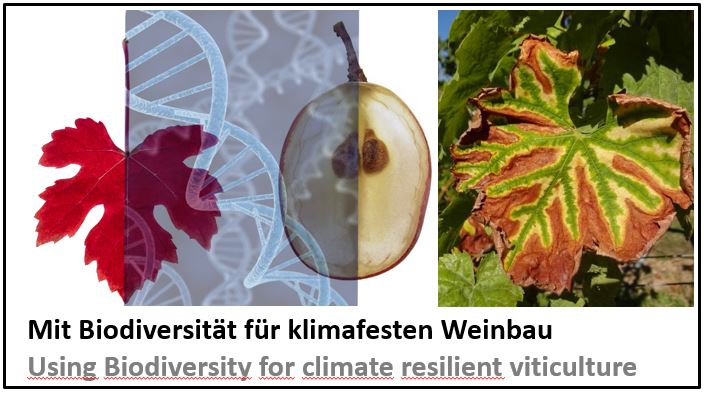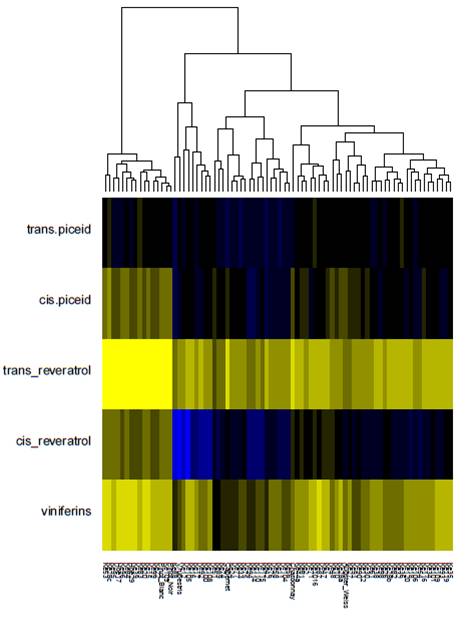Sustainable Viticulture
What is the motivation behind this research? We work for sustainable viticulture on an evolutionary base. A conservation project on the almost extinct European Wild Grape (the ancestor of our cultivated grapevine) turned unexpectedly into a precious genetic resource that is now used to breed disease-resistant varieties.
How did this idea develop? Grapevine is very susceptible for diseases, which renders plant protection very intense. Viticulture acconts for around 70 % of fungicide use. Most pathogens, such as the Downy Mildew of Grapevine (Plasmopara viticola) evolved with wild grapes that can cope with this disease. But pathogens are just part of the story: climate change brings new challenges, such as drought or soil salinity. Evolution has already solved many of these problems. Can we learn some of the tricks of Nature?
Savior from the alluvial forest. A species conservation project for the European Wild Grape (the ancestor of our cultivated grapevine) that still occurs at the Ketsch penninsula, turned into a valuable collection. Here, we discovered resistance factors against important diseases such as Downy Mildew or the new Esca disease that are interesting for breeding. The most promising candidates have already been crossed into cultivated varieties and some of the undrelying genes have already been identified. Since we know the gene version of interest, we can follow, how it is transmitted to the offspring (so called smart breeding). Our collection represents the entire genetic diversity that still exists in Germany, a precious resource. Therefore, our wild grapes are also internationally requested. Two years ago the Chinese Academy of Sciences offered to sequence the entire genome for most of our wild grapes. Currently, we assemble this into an extensive gene database, which allows us in the future to search for a gene of interest promising variants in the collection.
What is our vision? We do not think that a miracle gene will solve all problems. We rather think that we need a toolbox of interesting gene variants that we can combine for different challenges. The path of choice is molecular breeding, which is not related at all to genetic engineering. We just use the molecular knowledge that has been collected by us and many of our colleagues in an international endeavour to identify among the offspring of a cross those candidates that should be used further. Despite this acceleration, one still needs a long breath - grapes need several years to flower, which is the time, when breeding can continue. For our first crosses, we have already plants that have inherited resistance factors and will flower in a few years from now, such that the next step can follow.


